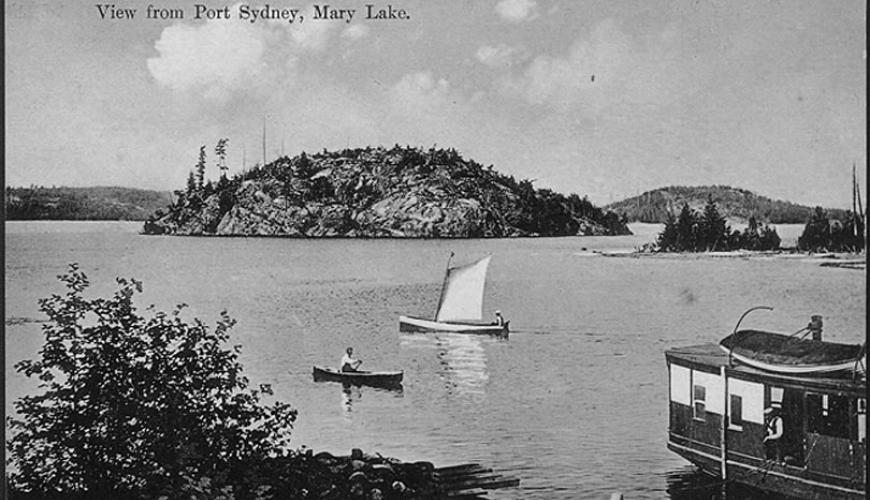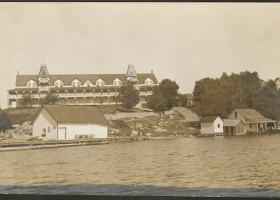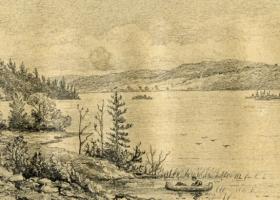History of Port Sydney

Indians traveled through this area regularly on their way to what is now Algonquin Park. Their families were frequently left on the shores of Mary Lake while the hunters went on to the north. The Indians were of the Rama Tribe and came from Orillia area. A chief by the name of Menominee camped on the lake in the 1860's and 70's.
The lake was surveyed by Alexander Murray in 1853 and he called it Mary's Lake after his eldest daughter. It was not long after that in the late 1860's that the first settlers arrived. By that time the areas close to Lake Ontario were well settled and rather than have the flood of settlers coming from Europe go further west, the government built settlement roads into the region. Cheap land and great stands of pine lured settlers into the area.
This began a period of thirty years where lumbering was the main activity around the lake. The settlers who thought that they could farm were soon disappointed after they cleared the land and found that the thin topsoil soon washed away. The pine trees belonged to the government and the only employment was in the forests and in the mills. The largest mill of the four around the lake was owned by Sydney Smith after whom the town was named and who was a benefactor to the town.
Early in 1897, the residents of Port Sydney decided, as a community co-operative venture, to build a cheese factory beside the river. By July it was turning out abut 300 lbs. of cheese every day, and providing an important market for the local farmer's milk. Partly as a result of this development, Sydney-Smith decided to build a new, larger steamboat, whose duties would include gathering cans of milk at all the local landings, as well as towing timber rafts to the various sawmills and running regular market trips to Huntsville. The new steamer was built on skids on the east side of the river, just north of Sydney-Smith's sawmill, close to the spot where the old Northern was launched twenty years before. She was supposed to be ready by June, but work took much longer than expected. Not until July 15th, did she actually hit the waves. She was christened the Gem, which seemed oddly comical, since she was a stubby little craft with a distinct tendency to roll as she puffed along...The Gem was 35 feet in keel by 10 feet in beam, and registered 6.12 tons.
In 1886 the railroad by-passed Port Sydney to the west at Utterson. Although the lumber industry and some farming continued to provide wealth, the future of the town seemed doomed. The beauty of the setting, however, began to draw people from Toronto. The homes that usually would have disappeared were turned into summer homes. The boarding house began to fill with tourists. The steamships carried visitors. Other hotels were built. A new future for the village began to develop.
By 1900 the clean beauty of the region began to attract city people from Toronto and from the sooty cities to the south of Lake Erie. People flooded the Muskokas to get away from the filth, smells and disease in the summers. Great lodges were built on the large lakes of Muskoka. This era of construction soon followed on Mary Lake. Clyffe House was built in 1905. Over the years 25 lodges and inns were constructed mainly centred in Port Sydney. Despite the fact that the town was by-passed by the railroad in 1886, steamships plied the lakes and brought vacationers to the lodges.












